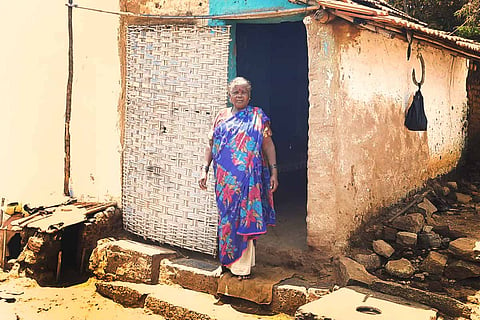

About 195 families residing in Changadi village in the Male Mahadeshwara Hills Wildlife Sanctuary in Karnataka’s Chamarajanagar district will be relocated en masse. While some residents had earlier resisted being shifted out of the forest, they later softened their stand after recognising that rehabilitation is a better option for their future generations.
Changadi, located in the Chowdahalli range of the sanctuary, has a majority of Vokkaliga residents and 13 families belonging to Soliga, a tribal community. Though the Soliga families had no issues with the rehabilitation, some Vokkaliga families were averse to the idea before they understood its importance and resolved to give up Changadi for a better future for their children.
According to the villagers, the change in the mindset of unwilling residents came after a public meeting a week ago with the District in-charge and Minister for Primary and Secondary Education S Suresh Kumar and other officials. The authorities ruled out construction of a road to Changadi per environmental laws, nor will the residents get access to basic amenities from the state government if they lived inside the forest.
Malle Gowda, an elderly resident who is now in favour of rehabilitation, says, “There is no future in Changadi now. We don’t have access to health or education and rehabilitation is the best option. All the villagers have welcomed it.”
Veeresh, a youth who was initially averse to shifting, says, “It’s time to focus on my future.”
Mahadev, another youth who was earlier unwilling to shift, now says rehabilitation is better as it would give his family access to health and education by living outside the forest area. Another youth, on condition of anonymity, stated that he would follow what his family members decide.
Dodde Gowda, a resident who fought for rehabilitation along with Hanur Raitha Sangha president Changadi Kariyappa, says there no one forced residents to shift, adding that villagers were misled by some vested interests earlier but have now realised the advantages of rehabilitation.
Basavaraja Gowda, a Soliga man, says the 13 families from his community have no qualms about being shifted out of the forest. His wife Kempamma also shares that they have accepted the idea of rehabilitation. Basavaraja says that the rehabilitation should be done with care by the officials concerned and any confusion will only jeopardise their lives when they move out of the forest.
Relentless efforts
The rehabilitation has been possible owing to the relentless pressure mounted by the villagers, especially Changadi Kariyappa and Dodde Gowda, on the officials concerned and elected representatives. Upset with the apathy of the authorities, villagers blocked roads during taluk and zilla panchayat elections, leading to the police filing cases against them.
The rehabilitation idea got support from the then Deputy Conservator of Forests (DCF) Malati Priya. She asked the Changadi villagers to take note of the successful rehabilitation of the residents in Nagarahole National Park. Some Changadi residents were taken on a trip to Nagarahole by the DCF and they were happy to see the results of the relocation, says Dodde Gowda.
The present DCF V Yedukondalu continued to pursue the rehabilitation idea and villagers laud his role in submitting a proposal on the same to the district administration and his constant follow-up.
Joining hands with the authorities, field officer Raghuram of the Wildlife Conservation Society (WCS), an NGO, says several meetings have been held to help the Changadi residents understand rehabilitation. He recalls that when the first meeting was held, only 8 people attended but gradually the numbers increased as the villagers got a better understanding of the relocation.
History of the settlement
About the history of Changadi, Kariyappa says that residents were initially settled in Alambadi near Gopinatham in the vicinity of Male Mahadeshwara Temple. After a fight with tribal men about 200 years ago, Vokkaliga families along with some Soliga families decided to leave Alambadi and settle in Changadi.
An area of 488 acres at Changadi was declared as revenue land in 1901 by the then Coimbatore administration when the region was part of Tamil Nadu. The region was merged with Karnataka after the reorganisation of states in 1956. Kariyappa explains that apart from the constant fear of elephant attacks while moving to and from Changadi, access to medical care and education is a mirage since residents have to travel about 20 km to Chowdalli to see a doctor.
The Changadi residents are to be relocated to Chikkallur, which is close to Hikkanahalli, Mattipura and Mariyapura. They are happy because the weather conditions and red soil are suited for agriculture, and there is availability of ground water and a canal. Dodde Gowda says that though the canal is yet to be supplied with water, someday there will be water to irrigate their lands.
Regarding the process of rehabilitation, Assistant Commissioner Nikitha Chinnaswamy will decide on the commencement of land surveys, number of families, updation of revenue records, among others. Meanwhile Hanur MLA Narendra has assured that he will take up revision of the rehabilitation package from the Rs 15 lakh announced earlier to Rs 20 lakh as per the present market rate.
If all goes according to plan, the relocation will happen in a year and Changadi will become the first settlement to be rehabilitated out of forest in Chamarajanagar.
Girisha is a freelancer who reports on wildlife and the environment.